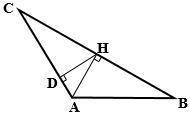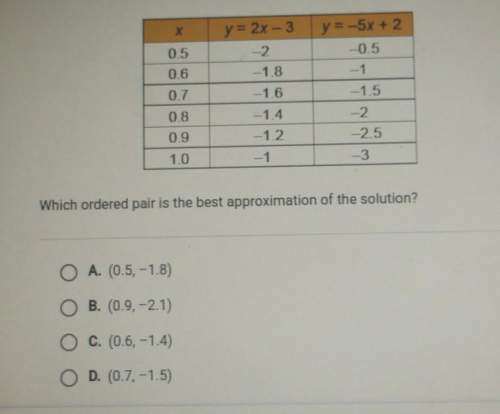Given: ∆ABC –iso. ∆, m∠BAC = 120° AH ⊥ BC , HD ⊥ AC
AD = a cm, HD = b cm
Find: P∆A...

Mathematics, 08.07.2020 19:01 brattyshae
Given: ∆ABC –iso. ∆, m∠BAC = 120° AH ⊥ BC , HD ⊥ AC
AD = a cm, HD = b cm
Find: P∆ABH


Answers: 3


Other questions on the subject: Mathematics

Mathematics, 21.06.2019 21:30, kyandrewilliams1
Alcoa was $10.02 a share yesterday. today it is at $9.75 a share. if you own 50 shares, did ou have capital gain or loss ? how much of a gain or loss did you have ? express the capital gain/loss as a percent of the original price
Answers: 2

Mathematics, 21.06.2019 23:30, bbby2
Aprisoner is trapped in a cell containing three doors. the first door leads to a tunnel that returns him to his cell after two days of travel. the second leads to a tunnel that returns him to his cell after three days of travel. the third door leads immediately to freedom. (a) assuming that the prisoner will always select doors 1, 2 and 3 with probabili- ties 0.5,0.3,0.2 (respectively), what is the expected number of days until he reaches freedom? (b) assuming that the prisoner is always equally likely to choose among those doors that he has not used, what is the expected number of days until he reaches freedom? (in this version, if the prisoner initially tries door 1, for example, then when he returns to the cell, he will now select only from doors 2 and 3.) (c) for parts (a) and (b), find the variance of the number of days until the prisoner reaches freedom. hint for part (b): define ni to be the number of additional days the prisoner spends after initially choosing door i and returning to his cell.
Answers: 1

Mathematics, 22.06.2019 01:40, leylaanddade
Amass weighing 16 pounds stretches a spring 8/3 feet. the mass is initially released from rest from a point 2 feet below the equilibrium position, and the subsequent motion takes place in a medium that offers a damping force that is numerically equal to 1/2 the instantaneous velocity. find the equation of motion if the mass is driven by an external force equal to f(t)=cos(2t).
Answers: 2

Mathematics, 22.06.2019 03:30, sweeps8758
Aking and his army will attempt to capture a fortress. the left and right flanks break off from the main group to attack the west and east guard towers. suppose the left flank has a 60% chance of success and the right flank has a 75% chance of success, independently of one another. if both flanks capture their respective targets, then the king has a 98% chance of successfully taking the fort. if, however, only the left flank captures its tower, the king has an 80% chance of success; if only the right flank succeeds, the king has a 50% chance. if both flanks fail, then the king's chance of capturing the fort drops to 20%. it turns out the king captures the fort. what is the probability that one, and only one, flank was successful (either the left, or the right, but not both)? (round your answer to 3 decimal places)
Answers: 2
You know the right answer?
Questions in other subjects:


Chemistry, 01.07.2020 15:01


Physics, 01.07.2020 15:01


Mathematics, 01.07.2020 15:01








